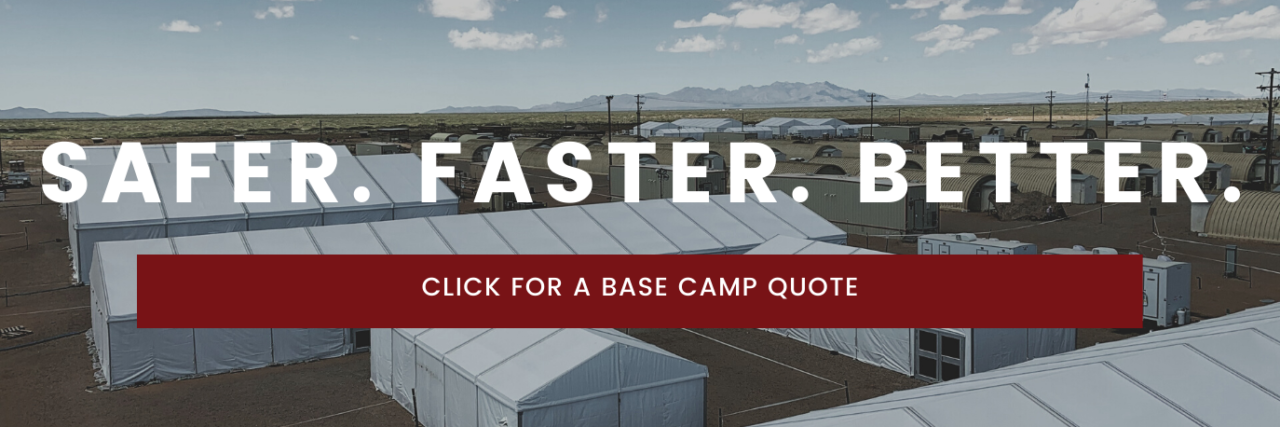After a disaster, it’s easy for chaos to take over. However, it’s important that you organize your disaster relief base camps properly for effective relief efforts. Your base camps provide a space for logistics and planning, but more importantly, they also house necessary resources for disaster relief personnel. Responders will need food, water, rest, and shelter to adequately take care of their own needs and aid the needs of disaster victims.
In this blog, we’re talking about the three big questions to ask when preparing your disaster relief base camp for a successful operation.
1. When Do You Need to Set Up?
Generally, if relief efforts last longer than 12 hours, your responders will need access to basic amenities and provisions. Therefore, you will likely need to set up disaster relief base camps for your responders. Establish disaster relief base camps in a safe area near the scene of the incident that can easily have access to supplies. Therefore, ensuring that your camp is located near an accessible road, if possible, to facilitate supply deliveries.
2. When to Conduct Shift Changes?
Once you have your emergency base camp ready, consider how to manage your relief workers’ shifts. Shifts should last for a maximum of 12 hours, at which time you should conduct a shift change. This way, your personnel can take care of their own needs, such as eating and sleeping. After 12 hours, disaster personnel will need to rest in their mobile sleeper trailers to recover from the day. The best time to change shifts is generally during the daytime since it makes it easier for on-coming shift workers to identify hazards. (Plus, daylight will make transportation safer.)
3. What Base Camp Supplies and Structures Would You Need?
To adequately provide for your responders, you should have food, water, and sleeping arrangements on your base camp. Additionally, full-service restrooms, showers and laundry trailers will help your workforce maintain their hygiene — and their sanity. Be sure that your plans include disaster relief mobile sleeper trailers for your responders to rest in and structures for food preparation as well as service. This way, your relief workers can care for their needs so that they can easily continue to help disaster victims more effectively.
Also, you may need to add a medical area for your base camp. What many incident commanders don’t realize is that EMS responders aiding victims often can’t be diverted to treat relief personnel. Therefore, if you notice multiple medical issues among your personnel, you may need to include a medical tent or trailer to properly care for their injuries.
To get these temporary structures and proper logistical support for your disaster relief base camp it’s important to call on an expert team that you can rely on. You’ll want to find a company that has an array of mobile sleeper trailers and command center structures at-the-ready — pre-disaster planning, gray water disposal, and mobile water truck delivery would also be some great added bonuses.



